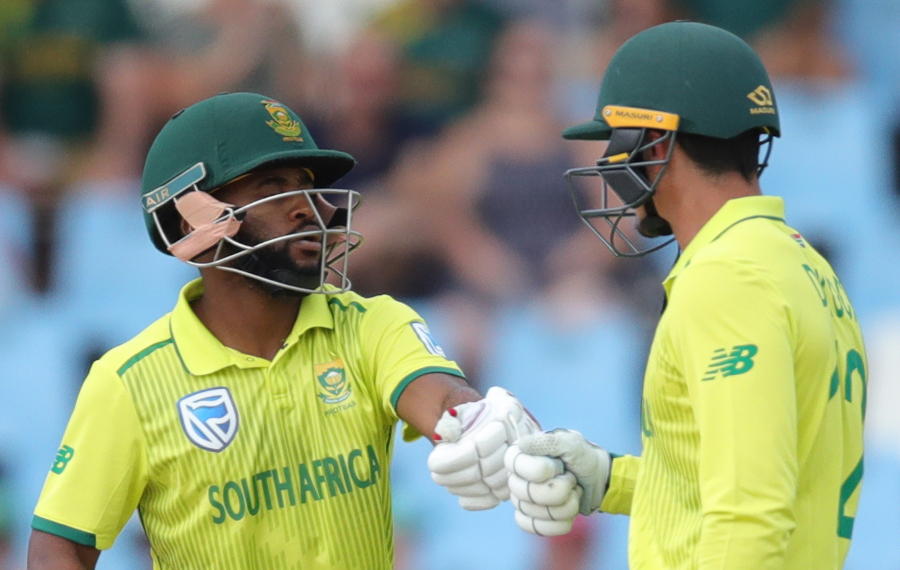It was a weekend of worry and a little hope but the overwhelming sense is that, with just nine T20I matches to go before the World Cup, the Proteas are in trouble, writes RYAN VREDE.
The Proteas, powered by eight overs of excellent spin bowling, rebounded well this past Sunday after getting pasted in the first T20I.
That eight-wicket defeat, secured with 30 balls to spare, was the starkest reminder yet that the Proteas are some way off being able to challenge the world’s elite T20 sides consistently. Indeed, they’re struggling to match the world’s mediocre T20 sides. The West Indies are ranked four places below them in the format (sixth vs 10th) but it appeared that the hosts were far superior.
That defeat left them with a record of four wins from 17 T20I matches under head coach Mark Boucher, and highlighted skills deficiencies with bat and ball that are certain to be exploited at the World Cup if not remedied quickly.
They started well with the bat, exploiting the new ball coming on and the field up, scoring at nearly 10 runs per over in the PowerPlay while losing just one wicket.
However, they scored just 107 runs in the 14 overs thereafter (run rate of 7.64) and looked to have no telling or consistent rebuttal to the West Indies bowlers’ changes of pace, cutters and varied lengths. It was a repeat on Sunday, where they got 69 in the PowerPlay and just 91 in the remaining 14 overs (run rate of 6.50).
While the Proteas have talented batsmen, there is legitimate concern about their range of skills, temperament and tactical intelligence, particularly on slow wickets, the likes of which will be commonplace at the World Cup in India.
Cross-bat shots to the leg side become increasingly important on wickets like this and against attacks which are looking to exploit these conditions with varied speeds and lengths, as well as cutters post-PowerPlay. Both teams’ top run-scorers in the first match, Rassie van der Dussen and Even Lewis, scored the majority of their runs this way.
The Proteas’ need to grow their skills in this area exponentially ahead of the World Cup, as they do a range of others, including creating opportunities to hit through/over extra cover, working full/yorker-length deliveries behind square, and toying with a bowler’s length by setting up deeper in their crease (potentially allowing them to hit to the leg side with power).
Losing set, top-order batsmen at critical times further compounds their trouble. This was a feature of both matches (Quinton de Kock scored 37 and 26, Reeza Hendricks got 17 and 42, Temba Bavuma 22 and 46), and compromises the team insomuch as the middle order has to adapt quickly under pressure. The Proteas’ challenge will be greatly amplified if one of the top three were able to bat for the majority of the 20 overs. If that batter is De Kock, it has the potential to completely transform their challenge.
Elsewhere, the comparison of the boundary count in the first game (five versus 15 for the Windies) was cited widely post-match, but this was misleading. The Windies batters were never examined by the same level of bowling skills, benefiting from a Proteas seam attack which looked to overwhelm them with speed, but painfully little skill.
Four of the six Proteas bowlers used went for 10 runs per over or above, which tells the full story of their ineptitude.
Things improved on the bowling front in the second match, with just one of five conceding in excess of 10 runs per over. George Linde and Tabraiz Shamsi went at 4.75 and 4.00, respectively, in their combined eight overs, which strangled the Windies and was at the heart of the Proteas’ victory.
The second match reinforced the sense that, when operating at optimal efficiency, the Proteas’ bowling attack is their biggest strength in the format at present.
They need to be given more to defend, though, and this is where the greatest improvements are required in the nine matches that remain before the World Cup.







